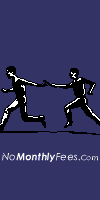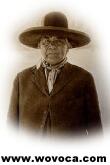|
||||||||||||||||||
Press CTRL+D to bookmark this page! |
||||||||||||||||||
 |
||||||||||||||||||
| Click here for
EarthMotherCrying Wallpaper |
||||||||||||||||||
The My Lai Massacre - Vietnam War |
||||||||||||||||||
|
||||||||||||||||||
|
||||||||||||||||||
|
|
||||||||||||||||||
|
||||||||||||||||||
|
||||||||||||||||||
|
||||||||||||||||||
|
||||||||||||||||||
The My Lai Massacre
The objective of the American military mission was clear: search and destroy the My Lai (pronounced, somewhat ironically, "me lie") hamlet of Son My village in the Quang Ngai Province of South Vietnam. What wasn’t clear was what to do with any civilians who might be encountered at My Lai. On March 16, 1968, Charlie Company, a unit of the US Eleventh Light Infantry Brigade, was ordered into combat by Captain Ernest Medina. The 150 soldiers, led by Lt. William Calley, stormed into the hamlet, and four hours later more than 500 civilians -- unarmed women, children, and old men -- were dead. Charlie Company had not encountered a single enemy soldier, and only three weapons were confiscated. The only American casualty was a soldier who shot himself in the foot. It was a massacre that would haunt the conscience of the US Army and the American people. However, it seems to have been forgotten. The average age of soldiers in Charlie Company was twenty; they had been in South Vietnam for three months. Trained in Hawaii, the unit was considered one of the best in the army. William Calley, aged 24, was not particularly popular with the men he led. Small in stature, he was considered nervous and excitable and too gung ho -- always trying to impress his superiors. Captain Medina ridiculed Calley, calling him Lieutenant Shithead in front of the troops. When the soldiers in Charlie Company pushed into the hamlet, they expected to be locked into fierce combat with a Viet Cong battalion believed to be at My Lai. For three months the American unit had been in no major battles but had suffered a lot of casualties from snipers, mines, and booby traps. The soldiers were ready to prove themselves, ready to exact revenge on the enemy. Charlie Company met no resistance; there were no Viet Cong soldiers at My Lai. Calley then ordered the slaughter of the civilians. People were rounded up into ditches and machine-gunned. They lay five feet deep in the ditches; any survivors trying to escape were immediately shot. When Calley spotted a baby crawling away from a ditch, he grabbed her, threw her back into the ditch, and opened fire. Some of the dead were mutilated by having "C Company" carved into their chests; some were disemboweled. One GI would later say, "You didn’t have to look for people to kill, they were just there. I cut their throats, cut off their hands, cut out their tongues, scalped them. I did it. A lot of people were doing it and I just followed. I just lost all sense of direction." Flying high above the slaughter was helicopter pilot Hugh Thompson. Sickened by what he was witnessing, Thompson set down his aircraft and began to rescue the Vietnamese survivors. he ordered his machine gunner to open fire on any American soldiers who continued to shoot villagers. In one ditch, Thompson pulled out a three-year-old child, almost smothered in blood, but not injured. After he radioed for help from other helicopters, an enraged Thompson reported to his section leader and in graphic detail told of what he had seen. Soon afterward, Charlie Company was ordered to stop killing civilians. Coverup of the massacre began immediately. Reports on the My Lai operation stated that it was a stunning combat victory against a Viet Cong stronghold. Stars and Stripes, the army newspaper, ran a feature story applauding the courage of the American soldiers who had risked their lives. Even General William Westmoreland sent a personal congratulatory note to Charlie Company. An initial investigation into My Lai was swift and definitive: My Lai was a combat operation in which twenty civilians had accidentally been killed. Too many soldiers knew what had really happened at My Lai. One of them was Ronald Ridenhour, a Vietnam veteran who was not at My Lai but had heard about the operation from several of his friends who had served in Charlie Company. A year after My Lai, Ridenhour wrote a letter about the atrocity and sent it to his congressman, Morris Udall. he also sent a copy of the letter to thirty other prominent officials, including President Richard Nixon. Reaction to the letter was quick, and Westmoreland ordered an immediate inquiry. Two separate investigations uncovered the horror of My Lai. The soldiers of Charlie Company were extensively interviewed. An army photographer, who had been at My Lai, produced pictures of the carnage. In addition, it was learned that hundreds of civilians had also been killed by other army units, at My Khe and Co Luy. Details of the investigations were leaked to the press, and an interview with William Calley, by freelance reporter Seymour Hersch, put My Lai on the front pages of American newspapers. Eighty soldiers were initially under investigation for the My Lai massacre. Twenty-five officers and enlisted men, including Lt. Calley and his superior officer Capt. Medina, were eventually charged with crimes. Only six cases were ever tried. In some cases, the evidence was overwhelming; some of the defendants admitted killing the civilians. But only one soldier, William Calley, was found guilty of murder. The court martial of Lt. Calley began on November 17, 1970. For more than four months, witness after witness came forward to testify before a six-officer jury -- all six officers had been in combat and five had served in Vietnam. Calley’s defense was straightforward: he had simply followed orders given to him by Captain Medina. As he testified, "I was ordered to go in there and destroy the enemy. That was my job that day. That was the mission I was given. I did not sit down and think in terms of men, women, and children. They were all classified the same." Did Captain Medina, at a briefing given the day before My Lai, explicitly order Charlie Company to kill any civilians encountered? Testimony at the court martial failed to answer the question. Some soldiers said Medina made it clear that the villagers should be killed, but other soldiers disagreed. Yet another group claimed that Medina didn’t exactly say that civilians should die, but he implied it. When the prosecutor made his final summation to the jury, he quoted what Abraham Lincoln said to the troops he commanded during the American Civil War: "Men who take up arms against one another in public do not cease on this account to be moral human beings, responsible to one another and to God." The jury found Calley guilty of murdering 22 civilians at My Lai and sentenced him to life imprisonment. After Calley had served three days in prison, President Nixon ordered that he be taken to Fort Benning, Georgia, to be held under house arrest. Sequestered in a comfortable apartment, Calley was allowed to have pets, entertain guests, and cook his own meals. Many Americans thought the Calley verdict was unjust. Some believed he was a scapegoat used to mask enormous blunders made by the US Army. Others felt he was a hero, fighting a battle against Communism. Protests were waged on his behalf. Thousands of telegrams in support of Calley poured into the White House. The legislatures of several states passed resolutions asking for clemency for Calley. Calley’s life sentence was subsequently reduced to twenty years, then reduced again to ten years. In 1974 he was paroled after serving three years under house arrest. From: "The 20th Century" by David Wallechinsky
Further Reading
Four
Hours in My Lai
Facing
My Lai: Moving Beyond the Massacre
My
Lai: A Brief History With Documents
|
||||||||||||||||||
|
||||||||||||||||||
Shapeshift to WOVOCA! to view this site's main page |
||||||||||||||||||
|
||||||||||||||||||
|
||||||||||||||||||
|
||||||||||||||||||
|
||||||||||||||||||
|
||||||||||||||||||










![[Image]](pict41.jpg)
![[Image]](pict43.jpg)